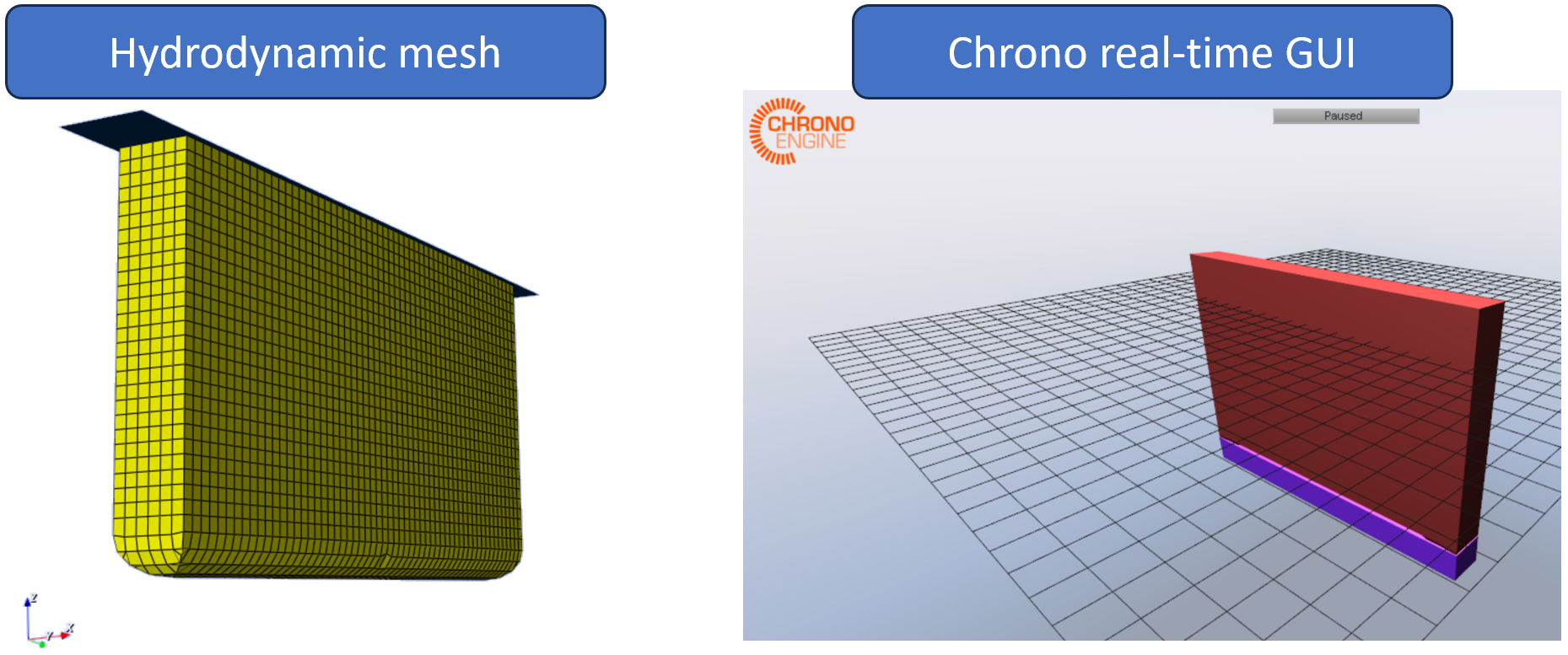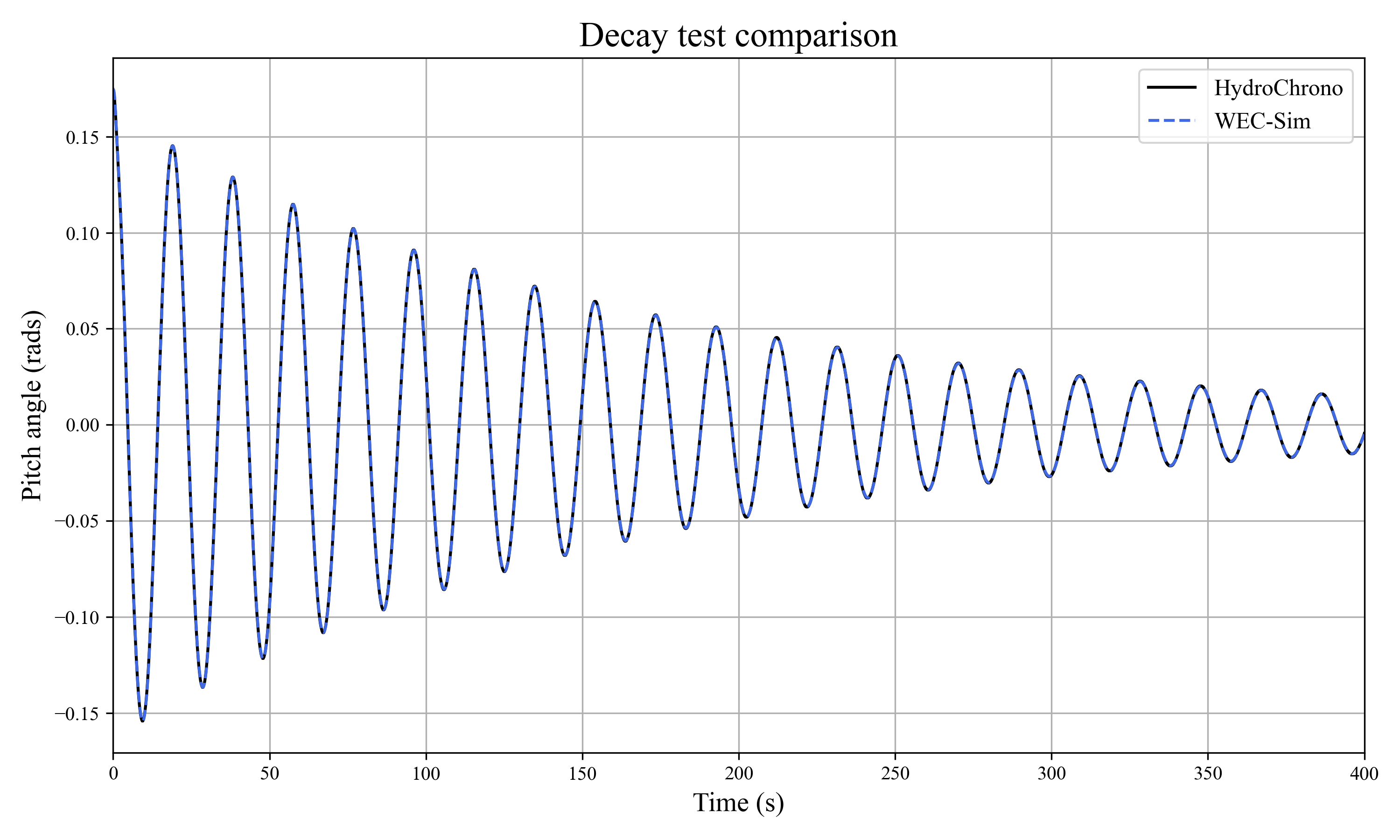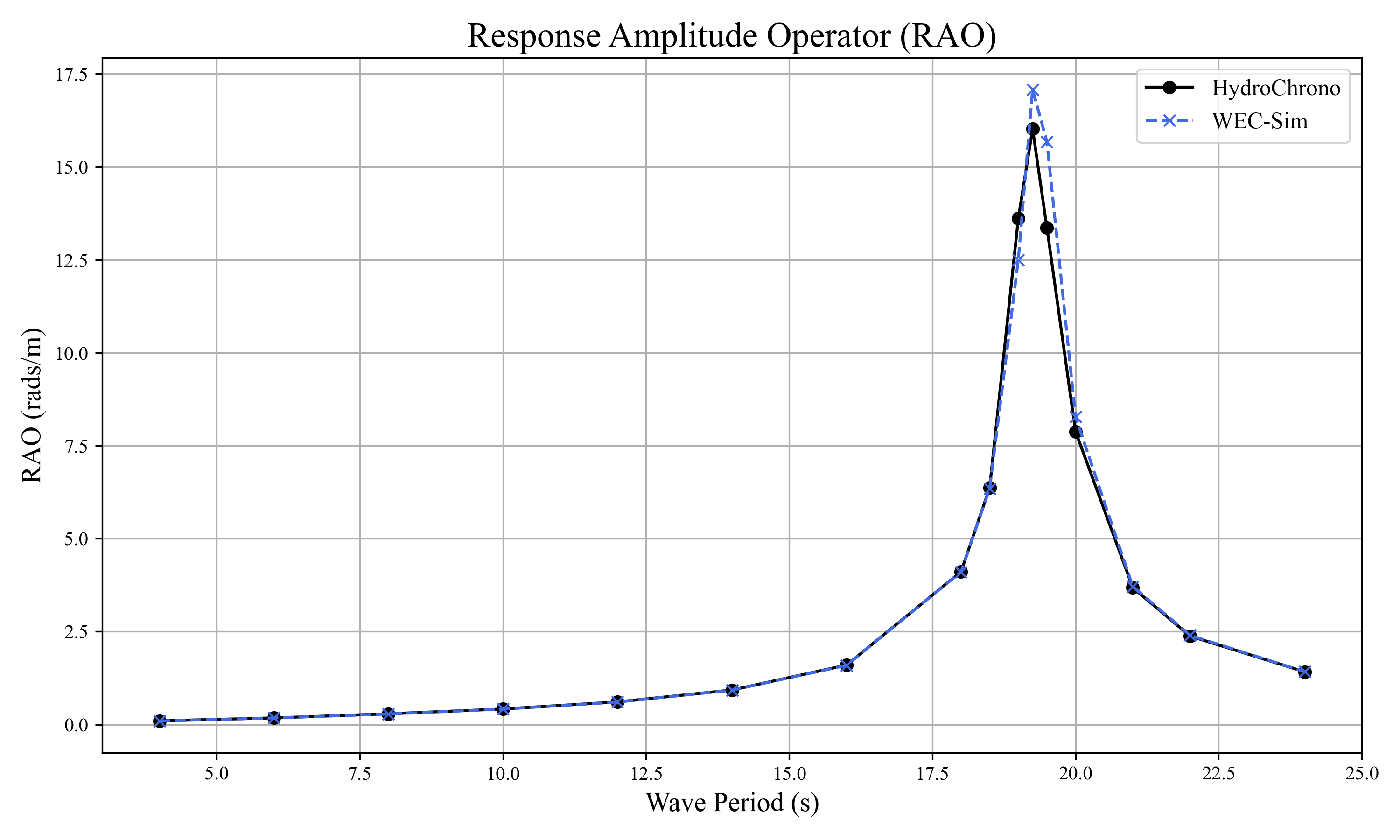Oscillating Surge Wave Energy Converter (OSWEC) - Verification
Overview
The Oscillating Surge Wave Energy Converter (OSWEC) is the verification case tested in this section, using the example model provided in the WEC-Sim package (WEC-Sim Reference). The verification process serves as a comparative measure against WEC-Sim results for assessing the accuracy of HydroChrono.

Model Parameters
The OSWEC model’s fundamental physical parameters—such as hinge location, center of gravity, and flap mass—are shown in the following table.
| Name | Symbol | Value | Units |
|---|---|---|---|
| Hinge Location, \( x_{Hinge} \) | \( [0.0, 0.0, -8.9] \) | - | m |
| Flap Center of Gravity, \( C_{G} \) | \( [0.0, 0.0, -3.9] \) | - | m |
| Flap Mass, \( m_{flap} \) | \( 127 \times 10^3 \) | - | kg |
| Flap Pitch Inertia, \( I_{yy, flap} \) | \( 1.85 \times 10^6 \) | - | kg.m^2 |
| Water Depth, \( d_{water} \) | \( 10.9 \) | - | m |
| Water Density, \( \rho_{water} \) | \( 1000 \) | - | kg/m^3 |
Results
The OSWEC pitch decay tests and Response Amplitude Operators (RAOs) were focused on for HydroChrono verification.


The verification of the OSWEC model provides confidence in the numerical implementation of the hydrodynamic forces for rotational degrees of freedom. The OSWEC’s base is treated as a separate body in this system, providing some confidence in the multibody hydrodynamics implementation. However, since the base is fixed, further verification is required in order to check the accuracy of hydrodynamic interactions in multibody systems.
References
For further information about the OSWEC model, please refer to the following: